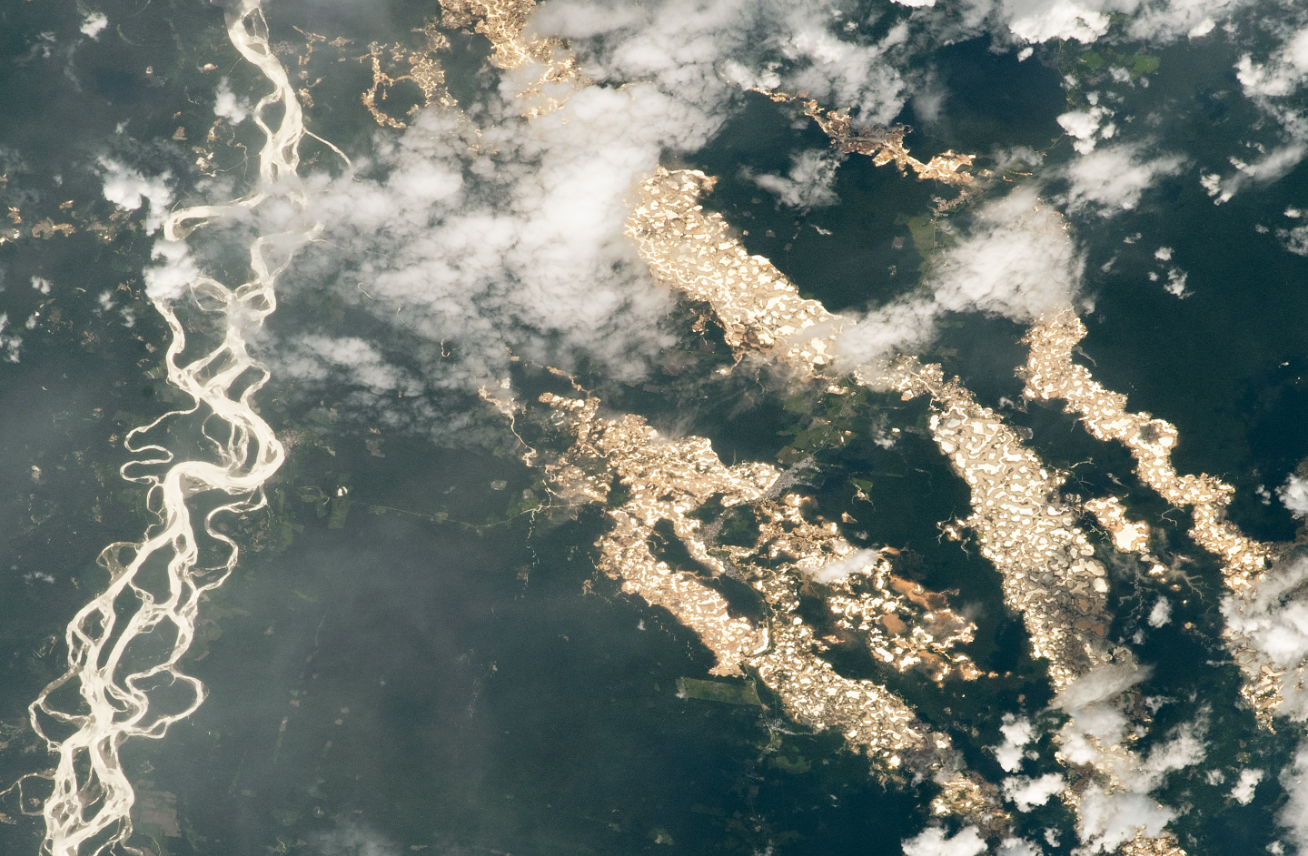There’s a chance the gold ring on your finger or the chain around your neck has a link to the prolific destruction of the Amazon rainforest in Peru. In a new study, scientists have looked at the impact of small-scale gold mining in the southern Peruvian Amazon and found that it has led to a massive uptick in peatland destruction in recent years.
ADVERTISEMENT
Around 70 percent of Peru’s “artisanal” gold production occurs in the Madre de Dios region where the sediments that line the rivers are abundant in the precious metal. It’s estimated that this is the main source of employement for up to 30,000 people, a number that has risen significantly due to the economic turmoil still rumbling from the 2008 financial crisis.
Much of this gold mining activity is illegal and considered a “principal contributor to deforestation” in the region. The new research has revealed another way in which this industry is harming the environment: the destruction of Amazonian peatlands.
Peatlands are waterlogged, boggy ecosystems composed of decomposing plant material that act as massive carbon reservoirs. They store carbon far more densely than forest trees, sequestering seven times the amount of carbon found in the trees of this region. However, vast sections of this boggy terrain are being unearthed and wiped out by gold miners, releasing alarming amounts of carbon into the atmosphere where it contributes to climate change.
Analyzing more than 35 years of satellite data from NASA’s Landsat program, researchers discovered that over 550 hectares (1,359 acres) of peatland have been lost, releasing between 0.2 and 0.7 million tons of carbon into the atmosphere. Alarmingly, more than half of this destruction has occurred within the past two years alone.

An astronaut aboard the International Space Station (ISS) took this photograph of numerous gold prospecting pits in eastern Peru in 2021.
Image credit: ISS/NASA
Currently, just 9 percent of mining activity in the region occurs in peatlands, but that figure is expected to grow in the next decade. If current trends continue, peatland mining is set to account for 25 percent of total mining by 2027.
The researchers argue that this could lead to the release of up to 14.5 million tons of carbon, which is equivalent to the annual emissions of millions of cars.
ADVERTISEMENT
“Mining is spreading fast into these fragile areas because it has become easier to reach these remote mining spots, and there just isn’t enough law enforcement to protect the area. If we don’t slow down the destruction, the damage to the Amazon’s peatlands could be permanent, with serious environmental, social, and economic impacts down the line,” Dr John Householder, corresponding author of the study from the Karlsruhe Institute of Technology in Germany, said in a statement.
“There are many other sites where considerable amounts of peat are suspected, but the ground data to test these suspicions is simply unavailable. What our paper shows is that even within a human generation, it is quite possible that large peat deposits can disappear from the landscape, before science has had a chance to describe them. For those peat deposits that are already known, these research findings are a wakeup call to protect them,” added Dr Householder.
It’s almost impossible to determine how much gold mined from the peatlands of the Peruvian Amazon enters the global supply chain, as it is virtually untraceable. Extracted by small, unregulated groups working without permits, it swiftly changes hands, passing through local traders, regional hubs, and middlemen before reaching bulk buyers. Once in the system, it arrives at processing plants, where it is melted down, blended with other gold, and cast into ingots, erasing any trace of its origins before it is sent to markets worldwide.
Peru ranks among the world’s top gold producers, yet a significant share of its gold is mined illegally. Given this reality, it’s almost certain that a substantial – though immeasurable – portion of the gold in circulation today was once hidden beneath the ancient peatlands of Madre de Dios.
ADVERTISEMENT
The new study is published in the journal Environmental Research Letters.
Source Link: Gold Mining Is Triggering Carbon Chaos In The Amazon Rainforest Of Peru